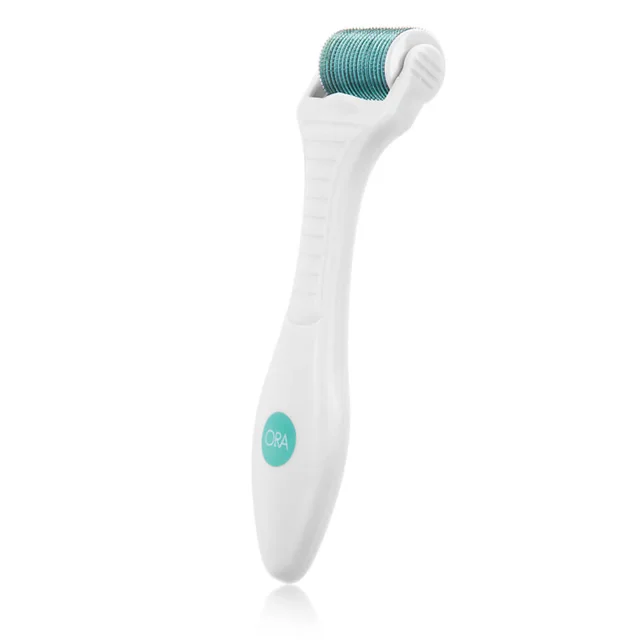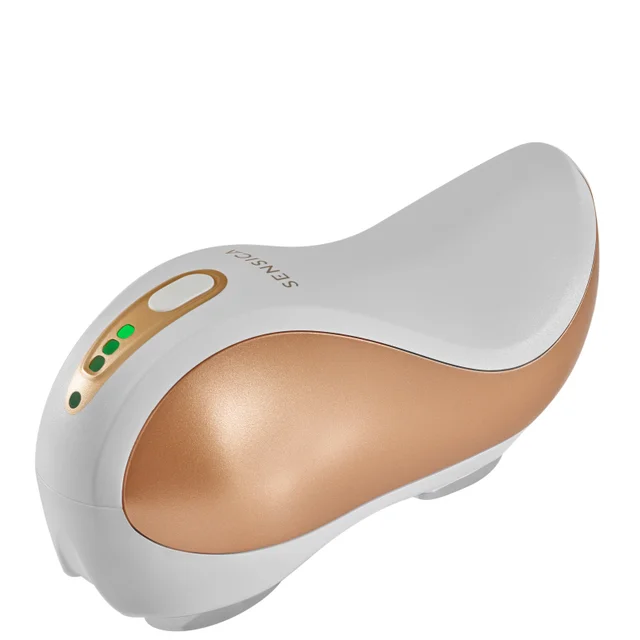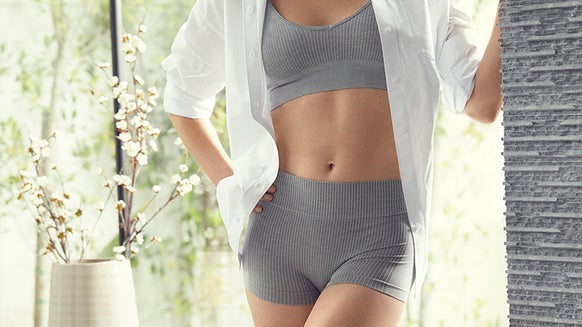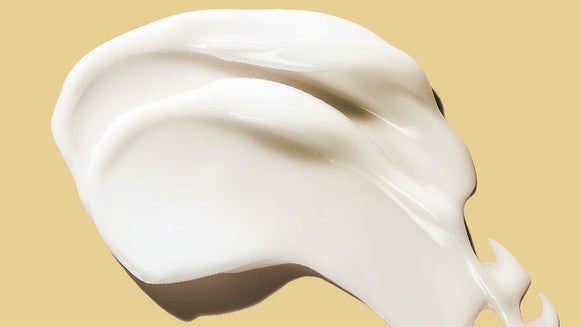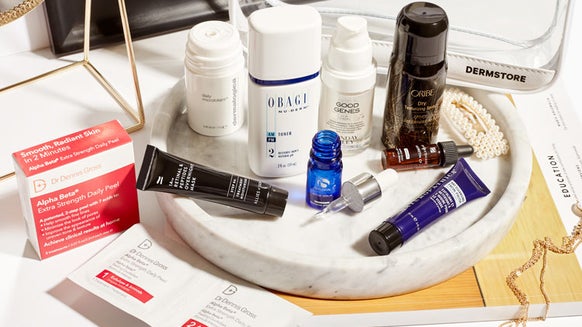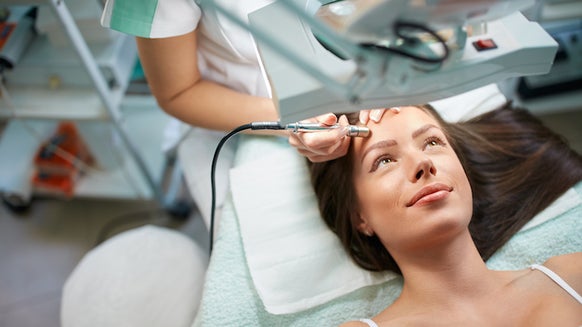Can Foam Rolling Help Reduce the Look of Cellulite? We Asked an Expert.
With so many products marketed for cellulite, getting rid of it is constantly on our mind. And while a firming lotion or in-office treatment might help reduce the look of cellulite, foam rolling---coupled with leading a more active lifestyle, of course---can be just as beneficial, if not more.
According to Lauren Roxburgh, body alignment, fascia and movement specialist and author of Taller, Slimmer, Younger—21 Days to Foam Roller Physique, foam rolling has a number of skin benefits, including reducing the look of cellulite. “People like to call it a self-myofascial release, but I feel like it’s a lot more than that,” Roxburgh explains. “Basically what the roller does is it smooths out and helps hydrate your connective tissues and helps boost your circulation,” she adds. As a result, “oxygenation in the tissue is better and so is your ability to flush your lymphatic system (a channel of vessels responsible for getting rid of toxins, allergens and other bad stuff from our bodies) so that you have more of that supple, youthful appearance,” she notes.
Want to know more on how foam rolling can reduce the look of cellulite and promote youthful-looking skin? We ask Roxburgh on the benefits of foam rolling, including how to foam roll for best results, ahead.
How Foam Rolling Works
Just like dry brushing, foam rolling increases blood circulation, which increases the flow of oxygen and nutrients in the body, which then helps our lymphatic system flush out any fluids. But how exactly does this have a noticeable effect on cellulite? Roxburgh says this has a lot to do with hydrating the fascia—aka, our connective tissues.
“Weakened connective tissue becomes thick, dense and brittle. [This] makes the fat protrude through the skin and what gives cellulite that yucky appearance,” notes Roxburgh. “Rolling goes in and smooths away any weakened or dried up, brittle connective tissue and brings in the water,” she adds. “It’s kind of like a dried-up sponge—it’s hard, dense, crispy and brittle, but if you put water in the sponge, you’re hydrating it and making it more supple, youthful and spongey. When you have hydration, the cellulite basically looks like it’s not there as much. The appearance is a lot less because of that hydration,” she explains.
Another reason foam rolling might help reduce the look of cellulite? It can better align the body. “Other people in my industry that are bodyworkers say cellulite can also be an effect of bad posture, bad alignment, sitting too much, losing connection to certain muscles and due to the weakening of certain muscles and disconnect,” says Roxburgh. “The roller brings you back into your stabilizing muscles, awakens all of those little muscles and helps you align your feet and hips better when you walk.” Aligning your feet and hips can help prevent caving of the knees and, as a result, “hanging tissue on the outside from pronating or supinating your feet,” Roxburgh adds. “When you improve alignment in the biomechanical standpoint, you’re actually going to have less cellulite, too,” she says.
How to Foam Roll for Best Results
When it comes to foam rolling, Roxburgh says there are a lot of things it can do for the body. “Think of it as your own private masseuse and your personal trainer because it can basically do both of those things for you,” she explains. “It’s this incredible tool that you can use on all different parts of your body,” she adds.
With many different movements to choose from, Roxburgh suggests trying inverted moves. “Inversions (getting your hips above your heart) have been a secret health practice, revered for centuries among yogis, ninja warriors, even royals and now celebrities,” says Roxburgh. “A regular practice of daily inversion carries long-term benefits for your entire system, [such as increasing blood circulation and decreasing stress levels]. And these moves don’t have to be fancy. You can just place the roller under your hips and extend your legs up.”
When targeting cellulite, inverted moves can help as they “stimulate the lymphatic system and circulation of blood flow,” she explains. “You can put the roller under your hips and basically do a ton of moves to release the lower back. [This] helps with digestion, boosting your metabolism and stimulating collagen in the face. Dermatologists are now saying that when you go upside down and do inverted poses, [the rich supply of blood and oxygen to the head] can provide nutrients to the skin on your face, too,” she adds.
When foam rolling, another important thing to keep in mind is your fascia. “The way I look at fascia is like an onion,” says Roxburgh. “You’re going to peel back the layers and when you peel, you’re smoothing it out and that’s what actually creates that longer, leaner, healthier, more vibrant look and actually makes your skin glow,” she adds.
How Often You Should Foam Roll
As far as a routine is concerned, Roxburgh says, “If you can roll out five, 10 or maybe 15 minutes a day, you’re golden,” she explains. “It’s more about consistency than it is about spending an hour doing it,” she adds. In addition, Roxburgh explains the importance of creating a “ritual and awareness” when massaging the body via foam roller. “The body builds up toxins from life, trauma and stress. [Foam rolling] basically flushes out that stuff,” she adds. That said, some of those repercussions keep coming back for more—which is why Roxburgh finds consistency to be key. “Those things are going to continue to be built up in our bodies because it’s the way we live our lives,” she explains. By creating a regular foam rolling practice, Roxburgh says you can better manage the physical effects of some of life’s stressors.
What Type of Foam Roller to Use
As it turns out, not all foam rollers are created equal—especially when it comes to skin and cellulite. “You definitely don’t want to use the harder-density roller when you’re working with the lymphatic system because it’s a fragile system and it’s also a matrix so you want to be thinking of it more restoratively, not aggressively,” says Roxburgh. “I always say it should be ‘hurts so good’ but it should never be hurt where it's damaging pain,” she adds. “A softer, medium-density roller is what you want to try. Avoid the really hard ones because it [won’t] get into the matrix of the fascial and the lymphatic system and you’ll miss out on those benefits.”
In addition to medium density, Roxburgh also says to look for a roller that has small bumps on the surface as they have a memory foam-like texture that can have serious benefits to the skin and body. “I always say it’s like ringing out a wet towel and like squeezing out the junk and gunk,” she adds.
Foam Rolling and Dry Brushing
When foam rolling for the skin, Roxburgh suggests adding dry brushing to your regimen—then sweating after with a workout or sauna session—for optimum results. “If you’re using the roller for cellulite and for the skin, I always recommend dry brushing before you roll,” explains Roxburgh. “It’s another form of getting that lymphatic system woken up and it’s like doing a little self-massage. If you do that first and then you go and do the roller where you’re inverting, twisting and rolling areas that might get thicker and more compressed,” she adds.
Exfoliating with a dry brush can help slough off dead skin cells and as a result, the pores appear more open and clean. Because of this, Roxburgh says, “You’re going to be able to eliminate more.” In a way, dry brushing is like a prep for rolling. “You’re dry brushing to open everything up, stimulate the lymphatic system and get rid of any dead skin cells. Then you’re rolling for the lymphatic drainage and the smoothing out of the fascia, bringing in that hydration to create rejuvenation,” she adds.
To top off her foam rolling routine, Roxburgh likes to sweat after. “I like to sweat through rebounding (bouncing on a mini trampoline) or in a sauna—or both,” she explains. “In a perfect world, I say do it in the morning—dry brush, roll and sweat. Then go on with your day and you will literally feel more aligned, aware, connected and supported.”
Best At-Home Firming Treatments
Looking for more ways to roll your way to firmer skin? Consider one of the following at-home firming treatments.
3. Beauty ORA Microneedle Body Roller System 0.5mm- Aqua/White

From the latest hair and makeup trends to the best solutions for your skin issues, we've got all your beauty concerns covered!
